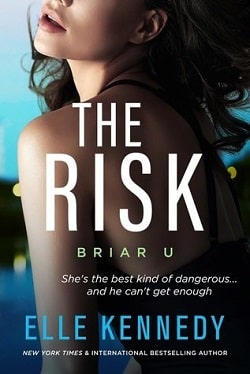My fingers leave black prints on my phone as I photograph the drawing. Without giving myself time to reconsider, I send it to Ezra, a silent acknowledgment of what I now understand.
His response comes right away, the phone vibrating on my charcoal-stained palm.
Unknown Number
That’s my truth, not yours.
Four words that cut through my revelation, reminding me that seeing him clearly isn’t the same as seeing myself.
My footprints map a chaotic path across the loft floor, charcoal smudges trailing behind me, a map without a destination.
Daylight bleeds into evening, the shadows lengthening as I pace between easel and window, window and bed, bed and bathroom. Each surface of my home is littered with the corpses of failed attempts, portraits torn in frustration, landscapes that melt into abstraction, and studies of hands that could belong to anyone.
None of them answers the question throbbing deep in my gut.
Who is Ren Mercier?
I kick aside a crumpled drawing, sending it skittering across the wooden planks. My reflection catches in the window pane, hair wild from constant tugging, chest still speckled with dried paint and fading bruises, the collar a perfect metallic circle interrupting my silhouette.
Three days since Ezra locked it around my neck, and the weight of it hasn’t lessened.
My phone sits on the windowsill, repaired enough to function despite its spider-webbed screen. I snatch it up, fingers typing before my brain can intervene.
Ren
Why are you doing this to me?
I drop the phone onto my workbench, not expecting an immediate reply. Ezra’s previous silence taught me that much.
But the vibration comes, the screen illuminating with an incoming message. Not text this time, but an image.
A white ceramic bowl, broken into jagged pieces and meticulously reassembled. Gold fills the cracks between fragments, the metallic seams catching light and transforming the bowl’s destruction into its most beautiful feature. Kintsugi, the Japanese art of repairing broken pottery with gold, treats breakage as an object’s history rather than something to hide.
The message couldn’t be clearer if Ezra had spelled it out. He wants to break me to rebuild me more beautifully.
My fingers curl into fists, nails biting into my palms. The bowl in the image is stunning, its golden fault lines highlighting rather than hiding its fractures. But it’s still a broken thing, reshaped by an outside hand, its original form sacrificed for someone else’s vision of beauty.
Yet beneath the rage bubbles a treacherous understanding. What if the cracks were always there, masked by the personas I’ve wrapped around myself like armor? What if Ezra isn’t breaking me but revealing the fault lines I’ve spent a lifetime plastering over?
I slam the phone face-down, unable to stare at the metaphor for another second.
My eyes sweep the loft, catching on every sketch, every painting, every charcoal study I’ve ever made of Ezra. They’re everywhere, tucked into portfolios, pinned to corkboards, stacked on shelves. His face watches me from dozens of angles, in multitudes of mediums, as a visual record of my obsession.
A hum of electricity moves through me as I stride through the space, gathering every image of Ezra I can find. The soft charcoal sketch from his bed at Rockford Manor. The oil study of his hands. The quick ink drawing of his profile.
The stack grows, heavier in my arms than mere paper should be. I carry them to the bathroom, where shards of mirror still glitter in the sink, where broken bottles of perfume fill the bathroom with cloying fumes, my earlier rage untouched. The bathtub gleams white and empty, a cast-iron canvas waiting for a new destruction.
I arrange the drawings with careful precision, layering them in the tub as kindling. Some curl at the edges, others lie flat, Ezra’s face repeated in an endless gallery of captured moments. My fingers linger on a particular sketch of his eyes closed in sleep, lashes dark fans on his cheekbones, his hair falling across his forehead.
This was the Ezra I thought I loved. The illusion he cultivated to lure me in.
My breath comes faster as I retrieve my phone and the lighter from the kitchen drawer. The metal is cool in my grasp, the flint rough beneath my thumb. I prop my phone against the bathroom wall, angling it to capture the bathtub and its paper contents. The record button glows red under my touch, capturing what comes next.
The first drawing catches flame with a whisper, the paper curling as orange fingers consume Ezra’s sketched face. I add another sheet, then another, the fire growing with eachcontribution. Heat blooms in the small bathroom, warming my skin as drawing after drawing feeds the blaze.
Ezra’s face distorts in the flames, eyes melting, jawline dissolving, the silver streak in his hair vanishing into ash. The fire devours almost two years of observation, of study, of the careful cataloging of a man I never truly knew.
Smoke curls toward the ceiling, setting off the detector with a shrill cry. I get a step ladder and disconnect it with a sharp twist, the battery clattering into the sink to join the broken mirror and knives.















